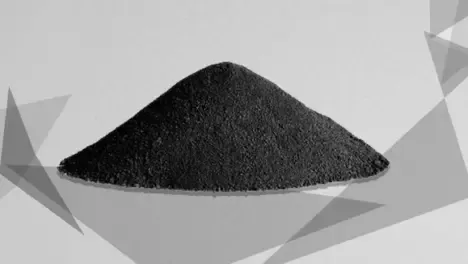Superconductive carbon black is also called toner. It is commonly used as a pigment and filler in the industry. It can give paints, varnishes, inks, plastics, etc. in a bright black color. It is also resistant to UV rays, acids, and alkalis.
In production applications, carbon black powder can spread evenly in many media. This lets it better reflect carbon black powder’s performance. The pigment group is breaking apart. As they disperse, the pigment’s surface area and oil absorption will increase. But, if the surface area of carbon black increases faster than it is wetted, the viscosity will rise fast. The viscosity will be relatively stable until all the pigment surfaces are fully wetted.
Solve this common problem. Use more dispersants with better wetting. Increase the dosage. First, disperse at a low speed to control shear force and slow down the agglomeration of carbon black.

The superconductive carbon black powder dispersion has been wetted, crushed, and stabilized. Dispersants play a very important role in this process. Without a dispersant, dispersion harder and less efficient. The paste can become flocculent and precipitate. It is also unstable. Then, the use of paint, paint, and ink will cause various troubles from time to time. Such as particles, glosses, floating colors, etc.
Carbon black powder has small particles and a low molecular mass. Because of this, some manufacturers make it into flakes or bead particles. They do this to cut air pollution from factories. But, this makes it hard to spread the toners.
During manufacturing, pressure squeezes the round carbon black powder. This continues until the particles can hold their shape without adding other materials. Low-pigmented, beaded carbon black powder has many aggregates, about 250nm across. In contrast, medium-pigmented carbon black aggregates are much smaller, about 50nm.
It takes a certain amount of time for superconductive carbon black powder to be wetted. If the polish the surface too quickly, the new carbon black interface will be wetted too late. This will cause carbon black to clump and thicken. So, choosing a good wetting agent can control grinding speed. This reduces thickening.
The choice of wetting agents and dispersants is crucial. The process and equipment for dispersion are also critical. The blackness and blackness of carbon black are due to its particle size. Smaller particles have a larger surface area. They are also blacker. This is because the primary particles have merged into the primary aggregates. But, their amounts are still important. When the particles are fine, the aggregates have a larger area. The color appears darker and the UV protection effect is better.
Fine-particle carbon black absorbs more light than coarse-particle carbon black. So, it has a stronger tinting power. However, when the particle size is reduced, the hue becomes a brown-brown phase. This happens because blue light is absorbed more.
Small primary particles make carbon black have a larger surface area. But, they make it harder to disperse. Treatment usually adjust wetness and dispersal.
The size of carbon black particles, their specific surface area, and performance are key. Small specific surface area means high performance. Large specific surface area means low performance. Small particles are dark. Large ones are light. They have more viscosity. They have lower conductivity and UV absorption. They disperse poorly but wet easily. They are slow and fast. The fast ones have low performance.
Second, structural carbon black particles exist as the primary particles. They also form sintered agglomerates during production. Such aggregates are chemically bonded by primary particles.
In the agglomeration process, carbon black has many chain-like primary aggregates. It is called high-structure carbon black. Carbon black has a low structure when its primary aggregates are made of particles with fewer branches. It is called low-structure carbon black. The structure of carbon black is the form of carbon black aggregates. Generally, the tighter the chain, the higher the structure. The lower the structure, the lower the structure of the carbon black structure.
It’s getting harder to disperse. It has higher conductivity and lower wettability. It’s getting faster and slower. It has a higher viscosity and less color. It has less blackness, filling, and gloss. Its tinting power is rising.
Third, the surface chemistry varies. The production methods of carbon black creates different surface chemicals. The surface of carbon black has different oxygen-containing functional groups (such as carboxyl, lactone, phenol, carbonyl, etc.). Carbon black with high oxygen groups is generally has a high volatile content. It also has a good hue and activity. The carbon black sample is heated to 825±25°C, and the carbon black volatiles are expressed as weight loss. The more oxygen-containing genes in carbon black, the greater the volatile content.
Fourth, carbon black has high density and hygroscopicity because it has a large surface area.
The amount of moisture absorbed by carbon black is mainly determined by the surface area. You can take steps to reduce the product’s hygroscopicity. This is especially true during packaging, storage, and shipping.
High moisture (hygroscopicity) can cause problems during processing. So, some types of carbon black need special packaging.
The amount of carbon black in plastic depends on the type of dispersion. It also depends on the resin’s properties. But, the ability to process it is also key.
Currently, most dispersing equipment can apply shear forces. It is sufficient to disperse the particles evenly. We need to decide how to use carbon black in plastics. This choice affects selection for coloring, UV protection, or conductivity.
